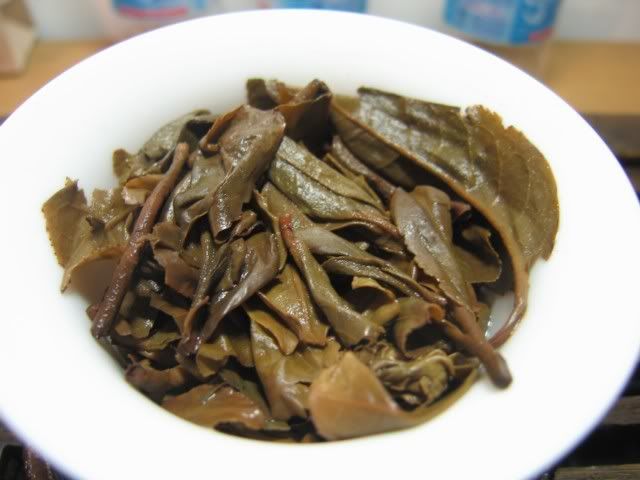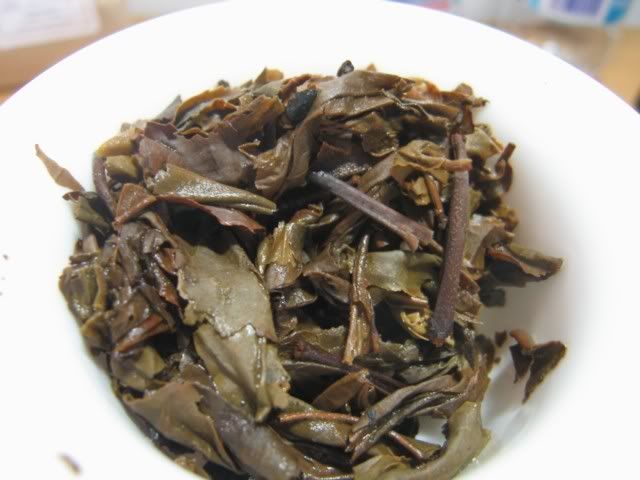Now…… there are loose ends to this too. These are things that, I think, are useful, but your mileage may vary.
Spent leaves — this is really quite interesting, as I think spent leaves often tell you a lot more about the tea than one would initially realize. I think spent leaves tell you a lot about the processing and (in the case of aged teas) storage conditions of the tea in question. For example, look at this

versus this

Two different teas, clearly. I don’t remember much about these, as they were taken quite a few years ago, but if I’m not mistaken, the top tea is probably younger than the bottom one, and is of the “smaller factory” variety. There’s not a whole lot that one can reliably tell from spent leaves alone, especially without the accompanying smells and tastes, but there are things that one can do to, for example, verify what was in the cup during the tasting. It can, in other words, help confirm or deny theories about the tea.
Lengxiang — literally “cold aroma”, this is what’s left in the cup long after the tea has been consumed. It is not so useful, again, especially since lengxiang is rarely nasty (although it is possible). Nevertheless, another piece of the puzzle.
Cold tasting — the later cups, for example, can also be drunk cold, or at least, cooled. I think sometimes when tasting tea that is too hot it is actually difficult to get much out of it — the aromas or the tastes can be obscured by the temperature. Cooling the tea down by waiting or other, more artificial means, can actually help enhance the sensory sensitivity.
Now……. the last problem is of course price, but that, really, is a separate topic that I have talked about many times before. On that, no more.

4 responses so far ↓
Anonymous // November 16, 2010 at 2:02 pm |
I once read that it would not be uncommon in China that the host would offer the guests some of the spent tea leaves to chew. Whether that’s true or not – I found chewing the spent leaves gives some additional information. Characteristics like durability seem to be reflected in the leaves’ chewing profile. Coarse teas also feel more coarse, smooth teas more tender.
Martin
Anonymous // November 16, 2010 at 8:38 pm |
On occasion I pour the rinse into a cup and leave it until the end, which is nice.
Another idea I nicked from Tim is to set out a load of tiny cups and pour a little from each brew into a cup. After the tea is dead you can go back and taste a series of infusions one after the other in a very short space of time. Works as a sort of mini recap of the session. Not something I can be bothered doing often but nice if you’re drinking something special.
Anonymous // November 23, 2010 at 12:40 pm |
I’ve noticed too that for both oolong and puerh, the liquor can taste quite differently hot and cold. I still don’t know why! But that’s interesting.
About chewing leaves, nobody has yet offered me any spent leaves to chew. But a friend once told me she often put spent green tea leaves in steamed meat buns 😀 I would chew green tea leaves, but probably not puerh :-p
BioHorn // December 14, 2010 at 1:09 am |
Nice pic (the first tea with plump whole leaves.)